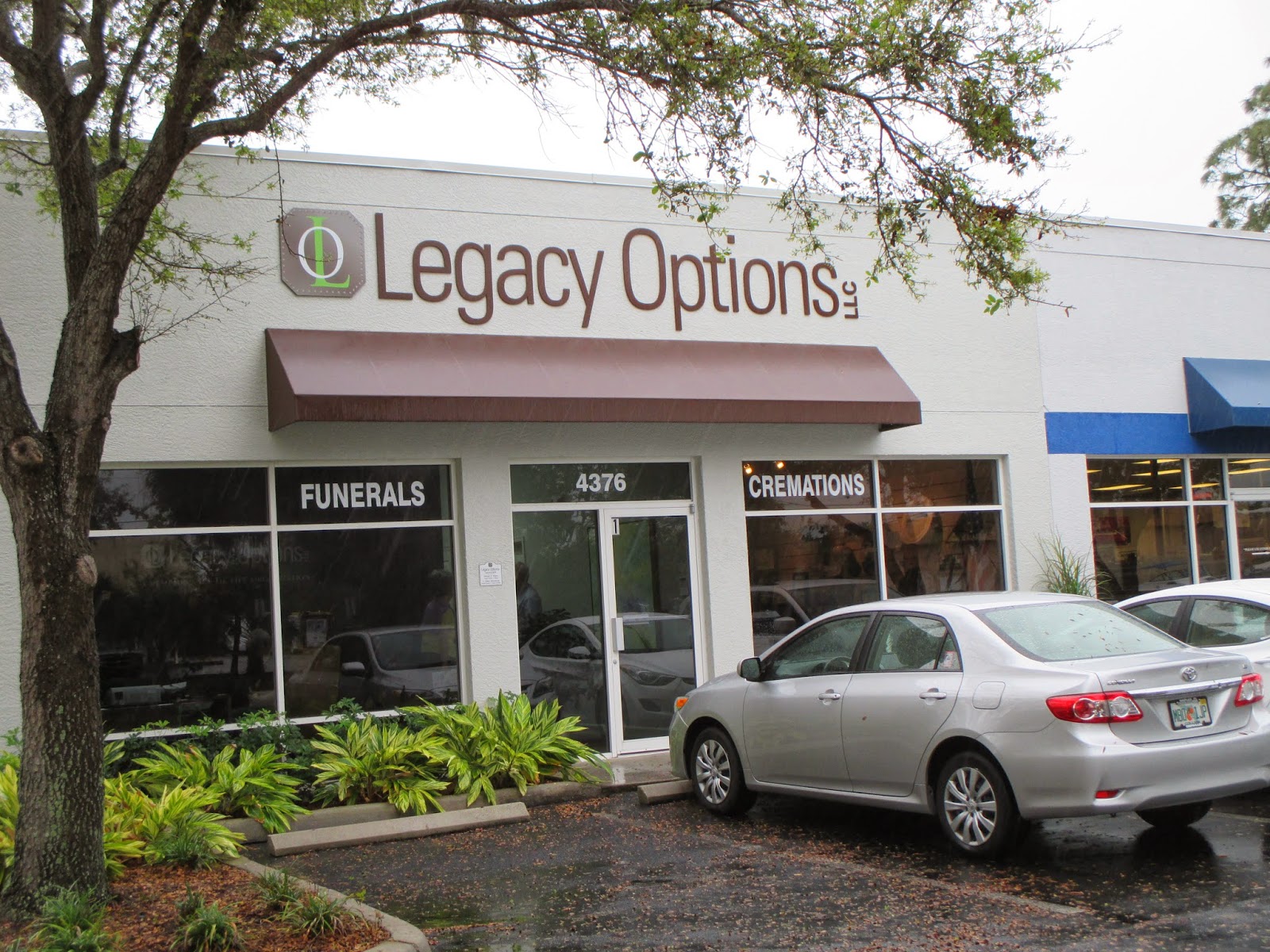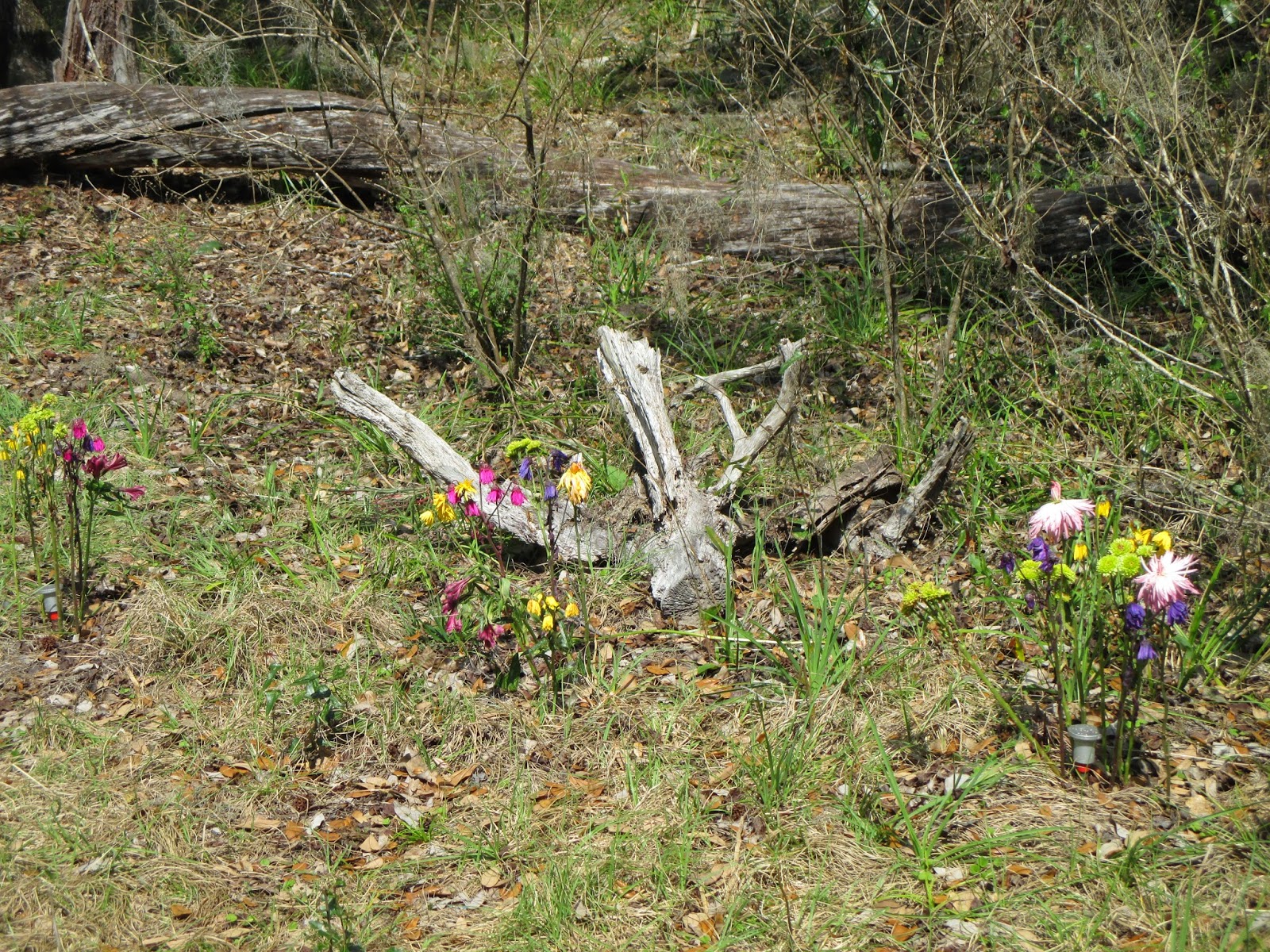A Fly'Bye Lady Visit In Florida
GAINESVILLE
PEACE and POCKET GOPHERS
The sound of a distant vehicle in the great beyond reminds visiting meanderers that life goes on. Spanish moss clinging to an overhead
canvas of rampant trees suggests attachment… like human bonds that prevail and
thrive, even though death has intervened.
Here, biological life cycles are permitted to perpetuate, undeterred by
the intrusion of mankind’s manufacturing mania.
Having become accustomed to
memorial stones and arrays of fake flowers dotting conventional burial grounds,
at first glance it is difficult to believe that we are traversing a cemetery…
until eyes fall upon definitive gravesites plump with mounds of dirt and
accented by natural ornamentation.
It is different here amid
the grassy meadows and oak trees on this seventy-eight-acre swathe of burial land. The parcel lies within
twelve hundred acres of the Prairie Creek Preserve, owned by Alachua
Conservation Trust, a charitable land trust that sustains natural resources of
the region. The cemetery portion
merges with the vast property intended for public usage and appreciation. One
of four named trails in the Preserve passes through the cemetery domain.
As a
protected nexus of nature, this locus of wetlands and uplands invites the
interaction of human life with wildlife.
And speaking of wildlife…
you don’t have to look far before seeing evidence of bodies – not only the dead, but also the living – that occupy space beneath the ground surface. Though there had been one hundred and three burials as of the previous year (fifty-five of them bodily), actually, signs of life here outnumber vestiges of death. Known
as pocket gophers because of their large, fur-lined cheek pouches that can be
turned inside out for emptying and cleaning, these burrowing rodents create a
network of tunnel systems for protection as well as for collection of
food. They are masterful dirt
transporters with a capacity to move a ton of soil to the surface each year.
The surface mounds of dirt
created by them cause vegetation to be buried deeper and deeper, resulting in
natural processes that improve soil quality over time. Fresh soil in the mounds serves as a
seedbed for new plants, possibly augmenting plant variety on site.
So the concept of natural
burial here is more inclusive than anyone may have thought!
The objective underlying
a conservation project is to protect and preserve land while encouraging people
to experience a natural environment. The Green Burial Council has certified the
non-profit Prairie Creek Conservation Cemetery, opened in 2010, as a
conservation burial ground; it is Florida’s first of its kind. An easement prohibits future
development – the man-made type.
Fees for burials are allocated for two funds. One is for the purchase of additional land, while the other
is for perpetual management and restorative measures. Since this property was originally an exotic game farm,
restoration entails reversing the effects of over-grazing.
Underground quarters here
cannot be purchased ahead of time.
Instead, families buy plots upon need once death has occurred or is
imminent. Assuming that a
decedent’s spouse or life partner may want to share a gravesite in the future, or if pet
remains are to be buried there, additional space is allotted to allow for that
eventuality. The plot size is ten by fifteen feet and the grave depth is three and a half to four feet.
Anyone who wishes to be buried here can submit a Burial Preference
Form that declares such an intention. Distribution of copies to key individuals heightens awareness.
Sections of the cemetery may be delineated for sects with distinctly specific burial practices and ties, though no areas are restricted to any particular group or religion. Contrary to protocol at certain Jewish cemeteries prohibiting burial of mixed Jewish families, anyone may be interred here.
A stainless steel archway capped by the Hebrew Star of David, sometimes dubbed "the gate of God," offers ceremonial enhancement during committal observances.
Whole body or cremated
remains (human or pet) are accepted for burial only if
devoid of casket and vault
containment as well as accessories that would deter the natural decomposition process. That proscription rules out anything that's metal, plastic, ceramic, concrete, or non-degradable in any way. Instead, biodegradable wooden caskets, cardboard boxes, baskets, or natural-fiber fabric shrouds are used. Embalming, a
procedure that instills a body with chemicals potentially toxic within the
underground milieu, is not permitted.
Beyond the strict protocol
outlined by green burial mandates, processes are marked by flexibility.
Sometimes cooperating funeral homes provide preliminary services. But home management is an option that
some folks choose as a way to be directly involved in funerary ministrations. Whether using traditional approaches or
devising their own, families are free to implement arrangements that are
meaningful and meet individualized needs.
Versatility seems to be a core value. At one time, a donkey delivered a casketed body to its
resting place. Commemorative
activities can proceed according to spontaneous inclinations, unrestricted by
pre-determined time constraints.
A funeral home’s hearse may
deliver a body to a gravesite, but is expected to move to an unseen location
during the burial ceremony. In
contrast, if a family chooses to personally transport a loved one’s body
accompanied by a caravan of motorcycles (or other atypical vehicles), that’s
okay. If particular musical
instruments, though blaring, convey significance, they can be played. There are no neighbors to complain
about the noise, so why not?
Ordinarily, graves are
hand-dug by cemetery volunteers, but guests may choose to become directly
involved in covering them once a burial has taken place. The topping of dirt initially taken
from beneath the ground will eventually settle as decomposition proceeds over
time.
Though traditional stone
memorials are not part of the landscape here and are not permissible, people may choose to festoon
gravesites with plants, trees, seeds, or other natural elements, such as wood
pieces that either came from the cemetery property or are native to
Florida.
A non-biodegradable tag is attached to each body. Two-inch round disks with identity data are
placed atop graves, with bronze signifying bodily remains and aluminum indicating cremated remains of a person or
a pet burial of either sort.
Burial perimeters are
measured and documented as part of a survey grid.
Families are offered an
opportunity to place rudimentary bench by gravesites. Either they construct the elemental seats
themselves or they hire someone. Cemetery personnel do not make or sell benches,
but styles that mimic one of four models are required, assuring that they reflect
the character of the surroundings.
A golf cart, chairs, and
benches are available for subsequent visits to gravesites.
Currently, interment of a
body costs $2,000, while the fee for burial of cremated remains is $250. For pets, the prices are $100. (cremated)
and $200. – $400. (body). Donations are solicited for
specific proposed purposes, including signs, a boardwalk, memorial benches, electronic mapping
of gravesites, and a memorial wall, along with restoration of native plants and other vegetation disrupted by human interference.
The base of operations is a substantial
lodge on the grounds of the Preserve, which houses administrative offices for Conservation
Burial Inc. as well as the Alachua Conservation Trust.
The wood-beamed interior of this rural
conference center accents the nature of the coordinate missions. Within it, Sandhill Stage is the name signifying a venue for a series of regularly scheduled concerts that are presented as
fundraisers.
Education and creation are
pivotal building blocks for bolstering the concept of conservation. Various workshops and community programs
are held to advance awareness of underlying principles and modes, including options
for natural burials. Serving as a
prototype for similar cemeteries in other parts of Florida may be a realistic
aspiration.
The prime mover for this
venture is an affable man, Freddie Johnson, whose idea for it in 2007 came to
fruition three years later. As a
stalwart ambassador of the earth, he has commitment written all over him. His down-to-earth principles of
operation seem to be governed by an adaptable posture that allows families to “do it
their way.”
From the moment of
introduction to the time of one’s departure, Freddie exudes hospitality. His
devotion to this enterprise is palpable.
Sometime if Gainesville is in your travel plans, consider stopping by
for a chat with him. You will be
charmed.





























